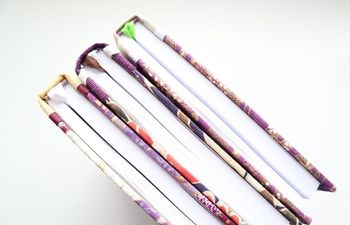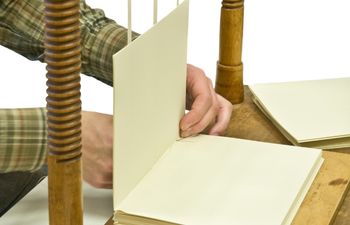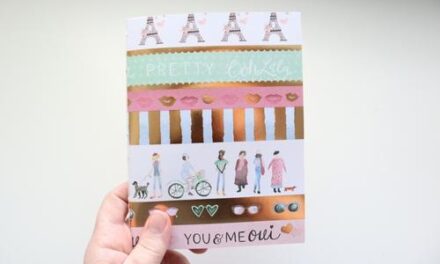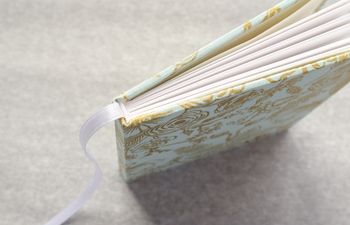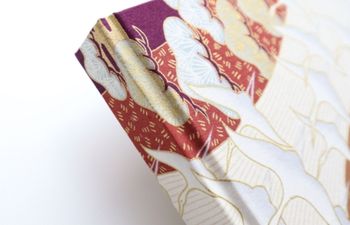Years ago, I received a handmade book tip that I think of every time I make a case binding: choose the right spine strip.
No one wants an ugly book, but we all know they exist. Professional looking handmade books are structurally sound and uniform in appearance, but achieving this requires juggling lots of variables. The spine strip is one overlooked variable that makes a huge difference in the appearance of a book. Since the spine sits perpendicular to the cover, it should compliment (not deter from) the design.
Today, I’ll show you how to choose the right spine strip so you can achieve the glory of a visually balanced book.
What is a spine strip?
It might seem simplistic, but let’s break it down:
- The spine of a book is the area where the pages are bound together
- The spine strip is a piece of card that helps to define, protect and provide flexibility for the spine
- A book case is created by gluing the spine strip and cover boards to a material like paper, book cloth or leather
Spine strip missteps
Before jumping in, let’s review a few of my ugly books. Remember, everything I discuss on this blog is usually related to my own missteps or failures. While I might create a Frankenstein now and then, I don’t give up. And you shouldn’t either.
Exhibit A: crappy spine strips.
We will refer to the photo below. I made all three of these books while practicing the basics.
Notice how wide the spine strip is on the first two books (blue and cream) vs. the last book (pink). All three books are using a spine strip with the same book board thickness as the covers, but with different widths. This creates two problems: 1) the strip dwarfs the poor headbands and 2) the eye is drawn to (and lingers on) the spine instead of the entire book
If the eye is constantly drawn to one area, there’s a balance issue. Unless the area is a feature-forward design element, the eye should not focus on it exclusively. Observers should gaze over the entire book from head to tail and feel like they can’t, for some reason, get enough of it.
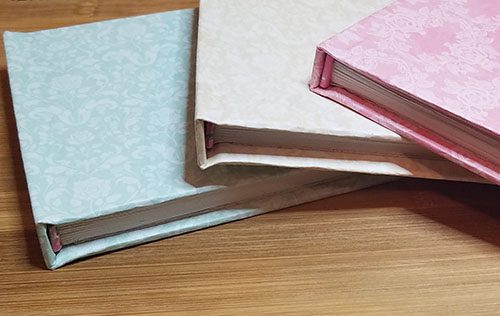
Spine strip material
A thick or sturdy card stock (220gsm, 100# or higher) is good for the spine strip, but thinner book board (0.5-0.7mm) can also be used. If you’re short on these supplies, the cardboard from a cereal box is a great substitute.
A good spine strip can be shaped with pressure, but remains firm.
Spine strip thickness
Now that we know what a spine strip is and the material used to make one, let’s talk about weight. The weight of the spine strip can dramatically change the visual balance of a book.
Spine strips in professional looking handmade books are created with thinner cardstock than the covers. As an example, if you have a 2mm cover board thickness, consider using a card of 0.7-0.8mm. For a 3mm cover board, 0.9-1.3mm would work well. The ratio isn’t exact, but it’s safe to say the spine strip should be about 1/2 to 2/3 the thickness of the cover boards.

A few spine strip examples
I’m using two different spine strip weights in the following photo. The book on the far left has a spine strip that is the same thickness as the cover boards. See how it has that “boxy” shape? Now, look at the middle and far right books. Both strips are of a thinner materials and I’ve curved the middle book’s strip slightly to give it a different look.
The middle and far right books allow your eye to move on to the covers. This is because the strips contrast, but don’t steal the show. They blend right in with the book, creating a comforting flow.
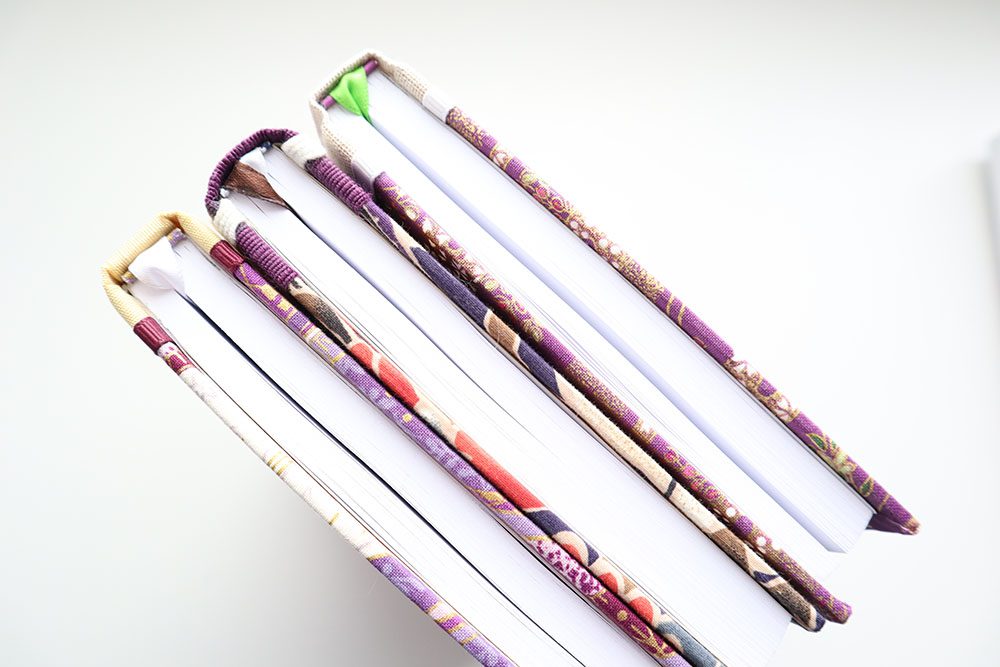
Bonus handmade book tip
Before listening to any handmade book tips, make sure you’re comfortable with the basics and bookbinding method itself.
Finally, “boxy” spines aren’t always horrible. Variables like cover material, headband and spine treatments can be adjusted to make up for a wonky spine strip. For some artists, imbalance itself can be a statement. Take these tips into consideration, but be sure to follow your own path.
Have fun!
More bookbinding goodness
✨ What tools do I need to get started bookbinding?
- Bookbinding Tools & Supplies Quick Start Guide – learn all about book making tools, which to buy first & where to go online
- Pick up my popular Complete Starter Bookbinding Tools Kit – all the bookbinding essentials in one spot
🌟 Looking for a simple way to start making books?
Try a Complete Book Materials Kit. Each one has everything you need (+ tutorials & videos) to make a beautiful book without all the fuss.
Thank you for taking me along on your book making journey!
Misty
